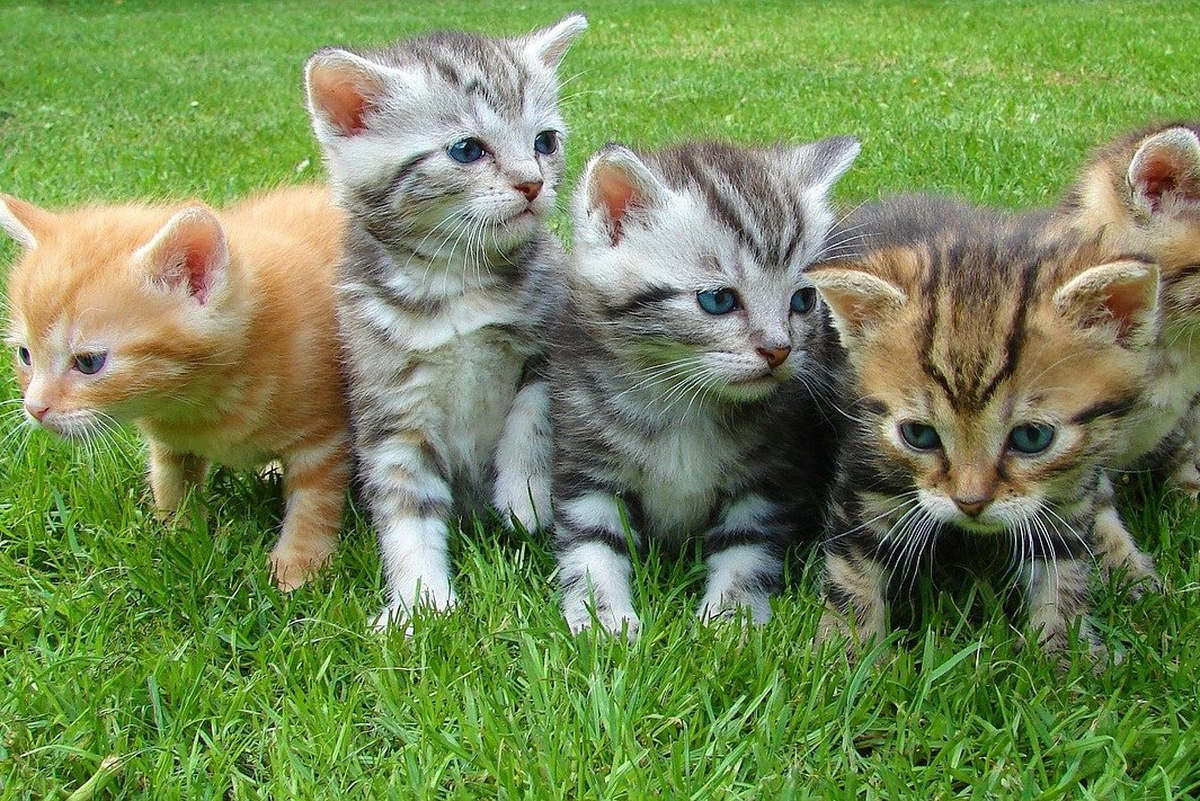
The scientific community is distressed by the new coronavirus that appeared a year and a half ago in China. For the first time, Jean-Marc Sabatier* establishes an analogy between the coronavirus of feline infectious peritonitis or FIP (not transmissible to humans) and SARS-CoV-2, which causes Covid-19. A better understanding of the complex physiological phenomena common to both viruses may allow, tomorrow, to provide a definitive medical response to the pandemic. Interview.
In collaboration with the heads of the State Laboratory of Virology in Wuhan (China), Professors Zhijian Cao and Yingliang Wu, and veterinary doctors Pierre Petruzzi (Clinique Vétérinaire de l’Albanne in Barberaz, Savoie) and Philippe Durieux (CHV Les Cordeliers, Meaux), you have highlighted the strange similarities between a cat disease and Covid-19. Can you explain?
Feline infectious peritonitis (FIP) is a viral disease of cats caused by an alpha-coronavirus, whereas the SARS-CoV-2 responsible for Covid-19 is a beta-coronavirus. These are related viruses. FIP virus is contagious to cats, but is not transmitted to other species, including humans. FIP has been well known and documented since the 1980s. FIP viruses are known to be enteric coronaviruses that have become pathogenic as a result of mutation(s), and affect either young cats (3 months to 3 years old) or older cats (10 to 15 years old). The pathologies associated with FIP are similar to the diseases of Covid-19.
Meaning?
The clinical signs of FIP are very polymorphic, like Covid-19, and are divided into “dry” and “wet” forms. In the “dry” form, there are possible ocular attacks, as well as granulomatous attacks on the lungs, kidneys, liver, central nervous system, ganglia, intestines, with possible neurological disorders…
The “wet” form is manifested by effusions in the abdomen or thorax, inflammation of the pleura (pleurisy), inflammation of the peritoneum (peritonitis), which are also well defined in Covid-19.
There are other clinical manifestations common to both forms of the disease: inflammation of organs, thrombosis, thrombocytopenia, coagulopathy, etc.
The “dry” and “wet” forms may coexist or follow each other. Infection of macrophages by the FIP virus is sometimes responsible for fatal granulomatous vasculitis in cats.
What else is known about this disease in cats?
FIP virus can be latent and harmless for years (up to 14 or 15 years) or multiply and become fatal in a short period of time. Progression to the severe form takes an average of 2 to 5 weeks. Cats cannot transmit the FIP virus to humans, but cats can (exceptionally) be infected with SARS-CoV-2, which causes Covid-19. The latency observed for FIP virus raises the question of the possible latency of Sars-CoV-2 given the similarity between the two viruses.
How is the virus transmitted in cats?
The virus is transmitted from mother to kittens. The virus is present in the feces and can easily infect other cats, especially in shelters and catteries.
What are the similarities between the cat viruses and SARS-CoV-2?
FIP viruses and SARS-CoV-2 are both single-stranded, positive RNA enveloped coronaviruses. This means that although one is in the alpha family and the other in the beta family, they are both closely related and zoonotic in origin.
In fact, both viruses attack the host renin-angiotensin system (RAS), and over-activation of this system triggers comparable disorders and pathologies, although the two viruses act on distinct cellular receptors.
The FIP virus has a molecule called Aminopeptidase N (APN) as its cellular receptor. This is a surface receptor found in the intestines, kidneys, lungs, epithelial and endothelial cells, etc. APN converts angiotensin-3 to angiotensin-4. Angiotensin 3 targets the AT1R receptor, which is responsible for Covid-19.
What about the other virus, SARS-CoV-2?
SARS-CoV-2 binds to the ACE2 receptor and leads to an increase in angiotensin 2, which again leads to over-activation of the AT1R receptor, which is very deleterious since it is responsible for Covid-19.
In other words, the two viruses will target the AT1R receptor (cat or human) through different routes.
What is important to understand is that APN and ACE2 are compounds of the RAS which is a major physiological system for the functioning of the body, whether it is renal, cardiovascular or pulmonary functions. It is also involved in the intestinal microbiota and innate immunity, both in cats and humans.
What do you conclude from this?
The diseases of cats caused by FIP virus are comparable to those caused by SARS-CoV-2. There is no specific treatment for the cat except for comfort drugs. RAS inhibitors are needed.
Is there no vaccine for FIP?
There have been vaccination trials using inactivated FIP virus. Young cats were vaccinated with an avirulent strain of the virus. But this vaccination did not protect them against oro-nasal inoculation of the virulent virus. On the contrary, vaccinated animals were more easily infected than unvaccinated cats.
This lack of protection suggests the existence of a phenomenon called ADE (antibody-dependent enhancement). ADE leads to a sequence of events that can be found in several viral diseases (HIV, dengue, Ebola…). Viruses infect cells by a mechanism that relies on the interaction between so-called “facilitating” antibodies (as opposed to protective “neutralizing” antibodies), and the virus.
This is unexpected. Can the vaccine promote the disease?
Indeed, the “facilitating” antibodies allow the virus to better penetrate the target cells. This mechanism of facilitating the infection of cells by the virus would be problematic if it were found in the SARS-CoV-2 vaccination. The cure would then be worse than the disease. However, it is possible to get around the problem posed by ADE during vaccination.
*Jean-Marc Sabatier, Director of Research at the CNRS and Doctor in Cell Biology and Microbiology, affiliated with the Institute of NeuroPhysiopathology (INP), at the University of Aix-Marseille. Editor-in-Chief of the international scientific journals: “Coronaviruses” and “Infectious Disorders – Drug Targets” (DR)
Next article: A lead for an effective vaccine against Covid-19

